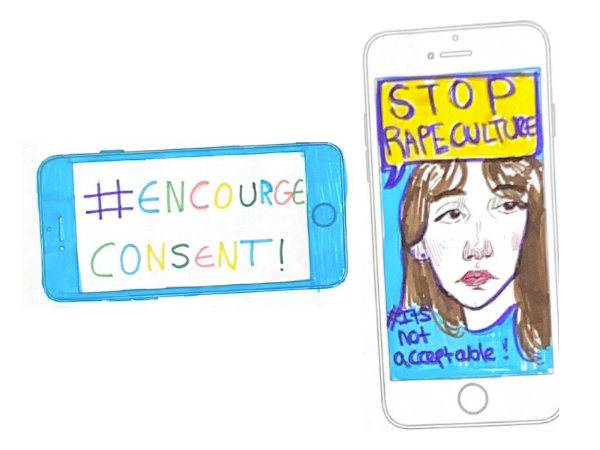Case Study
Sexual and gender-based violence has emerged as a key issue during the pandemic – at home, in schools, on the streets, and online. While digital technologies have helped young people feel connected, they also opened them up to risks and harms such as grooming, harassment, and non-consensual image sharing. Our research responded to these issues by prioritising the voices and experiences of young people (age 13-18), their teachers, and parents as we explored how they negotiated digital technologies during and after multiple lockdowns.
We used mixed methods including surveys, focus groups, interviews and arts-based methods to identify the challenges and benefits faced by young people as they transitioned to life after lockdown. Working with the award-winning charity School of Sexuality Education, and the Association of School and College Leaders, we fed our research findings into interactive digital resources that provide personal, educational, policy, and professional development resources. These are essential tools to equip our stakeholders with information, guidance and support needed to navigate our digital world.

Combatting gendered, sexual risks and harms online during Covid-19 provided a deeper understanding of the benefits and harms that digital technologies created for young people. The project filled an important gap by prioritizing young people’s online experiences in addition to the supports they, their parents, and teachers say they need.
“I’ve learned that there are places where you can go to speak about if you have sexual harassment that will actually believe you and won’t blame you for your own fault of getting sexually harassed.”
Girl, Year 9
“I really enjoyed learning about activism, and how we can help with combatting sexual assault and empowering victims of sexual assault. It really helps everyone to learn how to do this.”
Boy, Year 9
Our project provided meaningful outlets to express through art, surveys, and interviews how digital technologies were both a lifeline and a major cause of concern during lockdown and beyond. Young people told us about how social media were simultaneously helpful and harmful.
“[Xbox or Playstation] definitely brought me closer to friends that I haven’t spoken to in a while…it kind of stops you from going crazy in a way”
Boy, Year 10
“We started talking and he just kept asking me for pictures, pressuring me to send them. Saying he was going to do stuff to my family if I didn’t send them, etc.”
Girl, Year 9
Parents and teachers articulated their need for further support to better understand the world young people inhabit, and how to best support them. Few parents and teachers are confident using popular platforms like TikTok, Snapchat, and Social Gaming.
“I don’t always feel like I am mentally… equipped for the world that they are growing up in. Because I don’t understand it”
Parent
“I think part of the risk is that most old fuddy duddy’s like me are not using Snapchat and Instagram. We don’t fully understand how they work… I would say as staff, we don’t fully understand what the risks are”
Future studies should continue to use participatory and collaborative research methods in which participants not only produce data for scholars, but with them in meaningful ways.
“[W]hen you guys came in it was so refreshing, because we never got that. And, I think for Year 9s to experience something like that, it’s really inspiring that someone is actually listening and wanting to help.”

Researchers
Jessica Ringrose
Betsy Milne
(University College London)
Tanya Horeck
(Anglia Ruskin University)
Kaitlynn Mendes
(University of Western Ontario)


